-
81.Dr Gathorne Robert Girdlestone
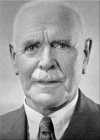
-
Dr Gathorne Robert Girdleston was a leading surgeon in his field of orthopaedics. He was the renowned founder of the Nuffield Orthopaedic Centre and the first Nuffield Professor of Orthopaedic surgery at the University of Oxford. Girdlestone worked tirelessly to create an exemplary model of how orthopaedic care could be delivered to those in need.
-
82.George Bentham
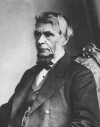
-
George Bentham was a botanist whose classification of the plants that produce seeds formed the basis of the way that vascular plants are classified today.
-
83.George Washington Carver
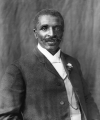
-
George Washington Carver is a well-known African-American scientist and inventor. He is famous of important agricultural discoveries and inventions, along with his research on peanuts and sweet potatoes.
-
84.Georgina Mace
-
Georgina Mace is a leading figure in biodiversity and conservation science, and she helped to develop the criteria for listing species on the International Union for Conservation of Nature (IUCN) Red List.
-
85.Gerald Durrell
-
Gerald Durrell was born in India on 7th January 1925 and he founded what is now called the Durrell Wildlife Conservation Trust and the Jersey Zoo.
-
86.Gertrude B Elion
-
Gertrude Elion saw her grandfather die of cancer when she was 15 years old, and this was the ‘turning point’ in her life which made her decide to study science in order to search for a cure for cancer.
-
87.Gerty Cori
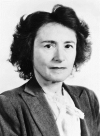
-
Gerty Theresa Cori was an American biochemist that studied animal metabolisms and the conversion of glycogen into glucose. Her work earned her a Nobel Prize in 1947 when she became the third woman ever to do so.
-
88.Reverend Gilbert White
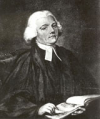
-
Through his observations of the natural world in his country parish, the Reverend Gilbert White transformed the way we look at the natural world and is known as one of the fathers of ecology. In his journals, his painstaking observations provided many important insights into the natural world around him. For example, he was the first person to accurately describe the harvest mouse and noctule bat. He was an inspiration to many other naturalists.
-
89.Gregor Mendel
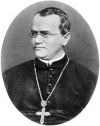
-
Gregor Mendel established the laws of inheritance which to this day underpin the field of genetics.
-
90.Gregory Goodwin Pincus
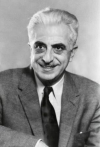
-
Gregory Pincus was an American endocrinologist and authority in mammalian reproduction. He is most famous for the invention of the oral contraceptive pill and is credited with revolutionising family planning.
-
91.Hans Christian Gram
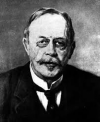
-
Hans Christian Gram was a Danish pharmacologist and pathologist who developed a system of easily identifying between two main types of bacteria. The method, Gram staining, is still widely used and in many cases an invaluable tool in laboratories.
-
92.Sir Hans Kornberg
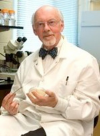
-
Sir Hans Kornberg is an esteemed biochemist with a broad academic history spanning across top universities in the UK and the USA. His research area asks questions about how micro-organisms use and transport small molecules called carbohydrates.
-
93.Hans Kosterlitz
-
Hans Kosterlitz was a German-born British pharmacologist who discovered enkephalins, the body's natural painkillers that occur in the brain.
-
94.Sir Hans Krebs
-
Sir Hans Adolf Krebs was a physicist and biochemist who is most renowned for his discoveries concerning cellular respiration, a biochemical pathway in cells that enables the production of energy. He discovered two important chemical reactions in the body; the urea cycle and the citric acid cycle.
-
95.Sir Hans Sloane
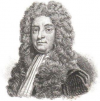
-
Sir Hans Sloane was a physician and botanist whose personal collections led to the establishment of the British Museum (and later the Natural History Museum). He also promoted inoculation against small pox and the use of quinine for malaria.
-
96.Sir Harold Gillies
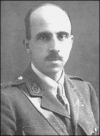
-
Hailed as the father of modern plastic surgery, Harold Gillies’ work during the First World War improved the lives of more than 5,000 injured servicemen and laid the groundwork for the discipline of plastic surgery in future conflicts and beyond.
-
97.Harriet Creighton
-
Harriet Creighton was a geneticist who discovered that genes are located on chromosomes. She worked with Barbara McClintock to prove this theory and showed that the recombination of genes on a chromosome requires the exchange of chromosome segments with its partner.
-
98.Heinz Otto Schild
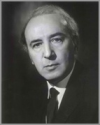
-
A shaky start to life would not stop Heinz Otto Schild achieving incredible things in the name of science. Europe was going through a huge transition at the beginning of the century and upheavals were a part of every day life in his home country of former Austria-Hungary (now Croatia). Due to increasing inter-country tensions, the Schild family were relocated to Budapest and Munich, where Heinz ended up attending school.
-
99.Helen Muir
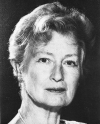
-
Helen Muir was a biochemist and rheumatologist who changed the way we view osteoarthritis. She shed light on the biochemistry behind some of the fundamental biological molecules in the human body.
-
100.Sir Henry Dale
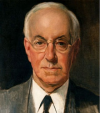
-
Sir Henry Dale’s research formed the basis of our understanding of neuroscience. He won the Nobel Prize in 1936 for his achievements, along with Otto Loewi.



